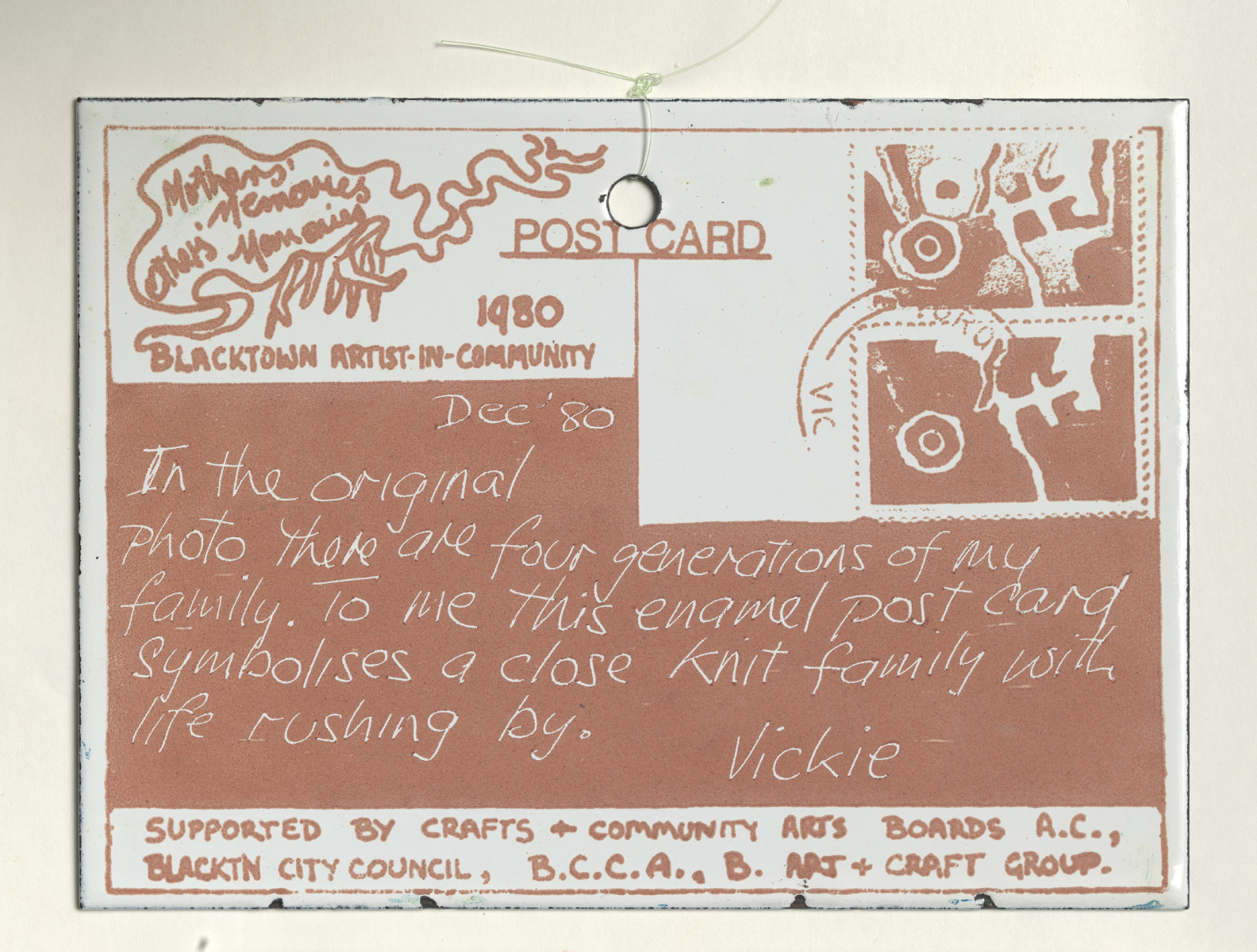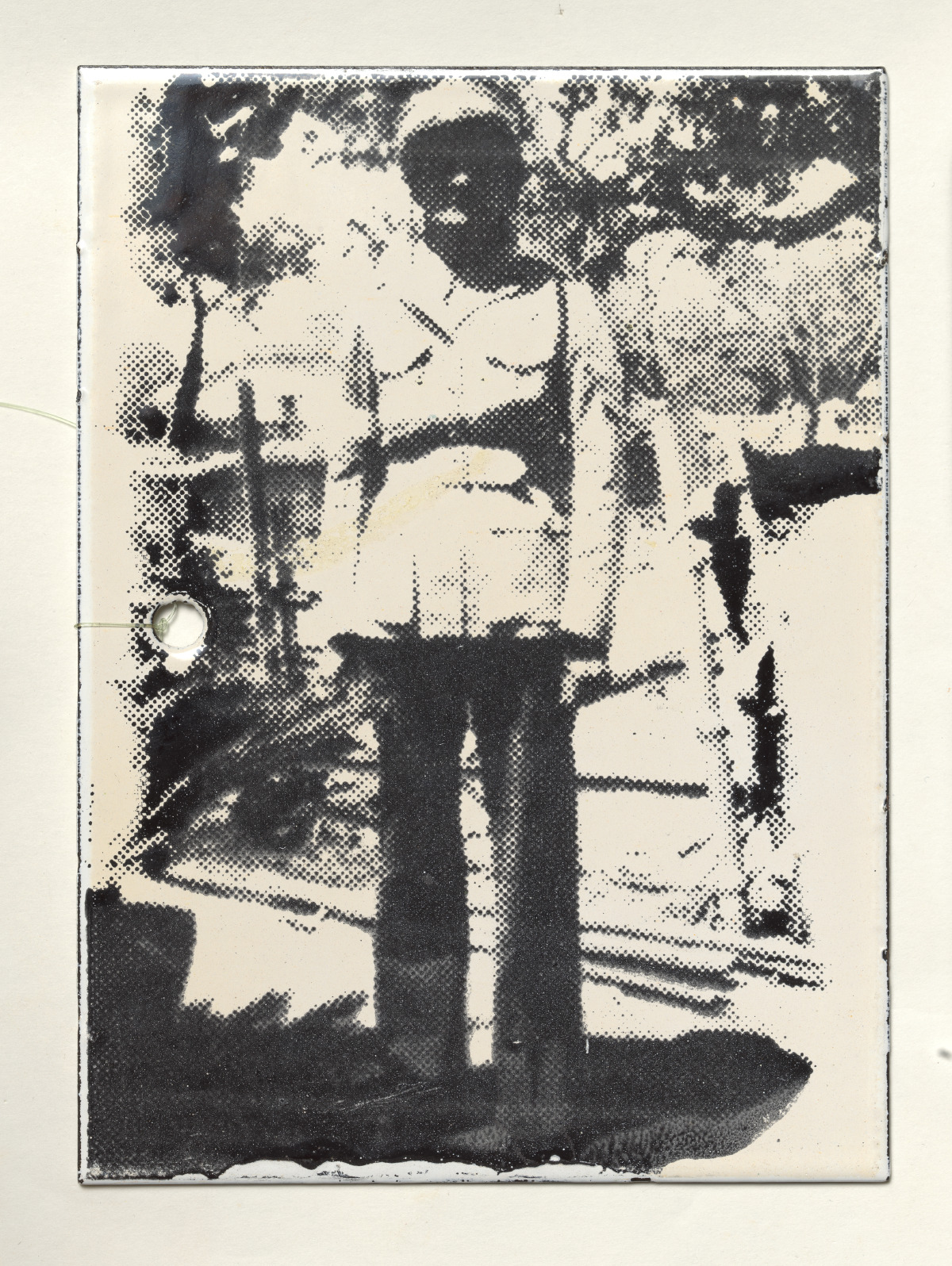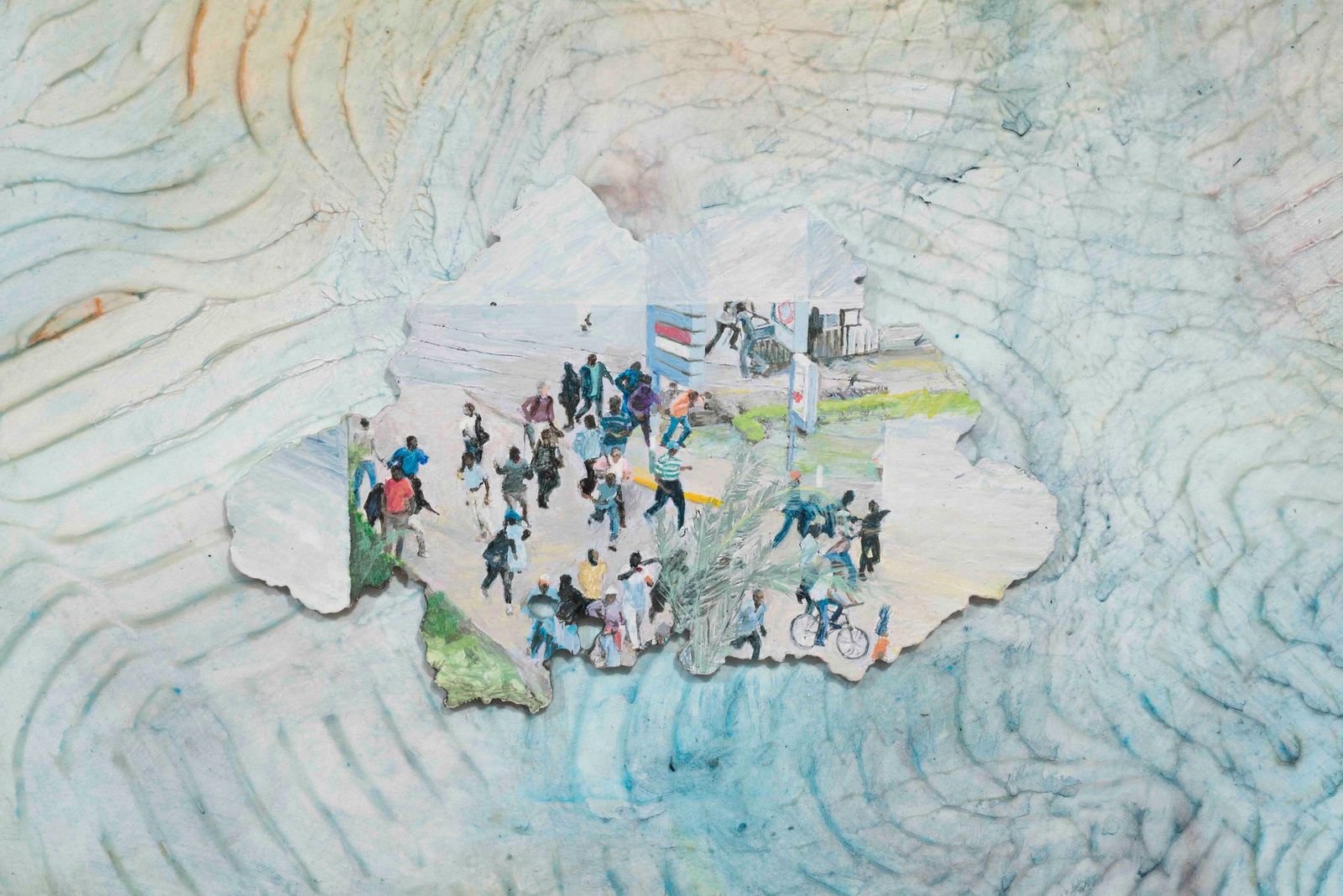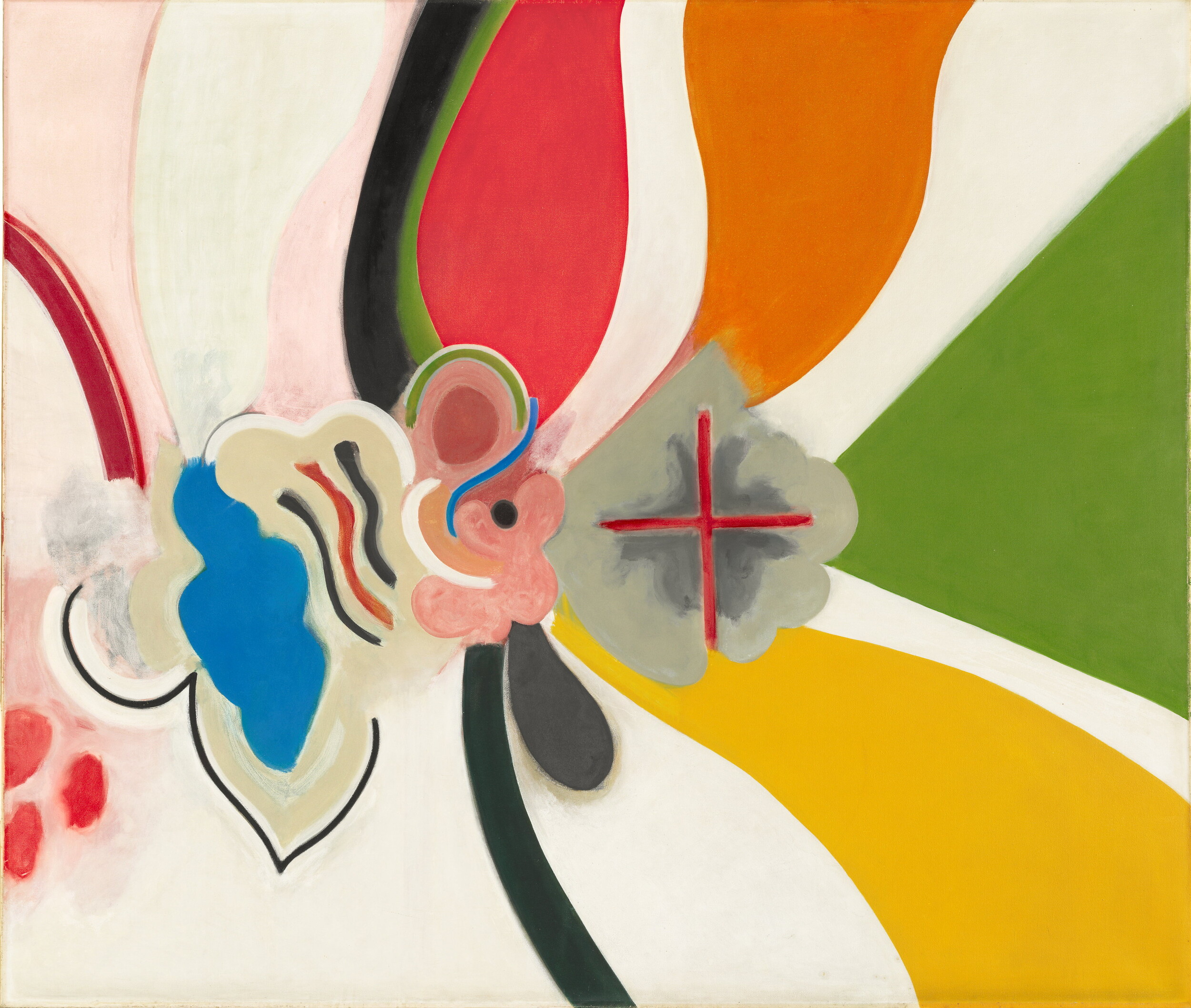Vivienne Binns: On and Through the Surface
Victoria Perin
“The year of Binns” is how curators Hannah Mathews and Anneke Jaspers have touted Vivienne Binns: On and Through the Surface, which is really two slightly different displays showing at Monash University Museum of Art (MUMA) until April and the Museum of Contemporary Art (MCA) in Sydney from July. I’m not sure if 2022 is big enough for Vivienne Binns. Binns is one of those artists that Australian art history can’t really handle—her work, her professional career, her personal biography, is too polymorphous for us. This show has a hefty catalogue with five provocative essays, which together do an extraordinary job of coming to terms with Binns. But, nevertheless, a central section of over 150 pages of illustrations, a selection of vintage interviews and a forensic biography by researcher Penny Peckham is also required to explain the artist’s lush malleability.
Recently speaking to Binns, I noted the range of her career—from 60s countercultural painting, to collaborative performance, enamelling, printmaking, community art, slide-art, mail-art and a rich late-style of painting—and expressed my admiration for its consistent quality. “Yeah”, she said off-hand, waving off my sweet-talk, “I’m good at everything”. It’s not egotistical if she’s right.
Arguably an artist best known for her community art projects, such as Mothers’ Memories, Others’ Memories (1979–81), it’s difficult to overstate just how visible Binns was as the representative for feminist art in Australia. For a movement that advocated for the work of unacknowledged women artists, she was the most acknowledged, the spokesperson. Her collaborative work with community participants is condensed here, concentrated into the central corridor of the show. Instead, the overwhelming portion of the exhibition is given over to her studio practice, the paintings undertaken alone in her private workspace.

This elegant exhibition is largely about painting. The visitor will observe how, in the 1990s, close-up explorations of pattern become a major preoccupation. They will walk forwards and backwards, as the ineffable visual effects are revealed as minute fiddling on the surface, created with a plastic appreciation of acrylic paint. This was a breakthrough achieved via an encounter with female Tongan artists, whom Binns observed making and patterning tapa cloth. As Binns pushed her interest in pattern away from the literal tapa designs, she reached for the close-at-hand and began her series In Memory of an Unknown Artist (from around 1995). In this series, designs from items around the artist (a beloved tablecloth, a tissue box, vintage linoleum flooring, a woven basket) were observed in all their intricacy. Recognising the eye and the skill of the original maker of these quotidian, often domestic designs, Binns pays them due homage with her forensic quotation of their work.
As an abstracting method, Binns prizes pattens for their reserved, wordless quality. Immediately attractive to humans, patterns appeal to the eye rather than the intellect. Additionally, as she noted to me, pattern “only lets a little bit through”. Patterns disguise the hand of their designer. Only a little bit of personality, a little piece of the artist, can leak out. For an artist who is almost legendary for her talkativeness, the paintings are surprisingly withholding.

On observing this restrained element across Binns’ latter oeuvre, I return to the unassuming display of Mothers’ Memories, Others’ Memories, the art workshop in which Binns helped community participants in Blacktown, Sydney, make enamel postcards and didactics out of their mother’s mementoes, before they were exhibited in galleries and shopping malls. This heavily anthologised, frequently discussed cornerstone of Australian feminist art is represented by a slim turnstile of the enamel postcards (one of two that were made), a 1979 poster advertising the project and a digitised slide-show, made by Binns to document her workshops and its participants.
Ostensibly an emotional and expressive project about the maternal relationship, this exhibition caused me to rethink the affect of this well-known work. In particular, I get stuck on the postcards. In all the words we’ve devoted to this work, why do we never talk about how strange the postcard form in Mothers’ Memories… is? We almost never interrogate the implications of asking people to make these documents, souvenirs not of their town or of the landmarks around where they lived, which are cultural and geographical sites that are the natural and appropriate subjects for the postcard. No, instead, Binns had them make souvenirs of their family: mothers instead of the Eiffel Tower, instead of the Opera House, mother’s memories instead of Niagara Falls. In a final assault against the logic of the postcard form, these pieces of mail went unsent. Like symbols of anti-tourism, these postcards are tied to their turnstile rack, attached to a nylon thread. Non-voyage!

The strangeness of Binns’ postcards is, in part, due to the fact that the form was borrowed from an earlier project, 1977’s Scenes from the Highway of Life, which was (unlike Mothers’ Memories…) explicitly a mail art project. That earlier work featured more than a hundred small pieces by friends and collaborators, and was also displayed on a readymade turnstile rack. Many had been posted to Binns, some solicited, others not. Scenes from the highway of life included about eight enamel postcards, all made by Binns alone. The enamel postcards were not precisely mail art, but they were inspired by it. Inspired by the democratic approachability of the postal art form. This is the context of the earlier enamel postcards, and this earlier work was on display in the workshops for the participants of Mothers’ Memories… to observe.
As Peckham notes, Scenes From the Highway of Life was “the first in a series of collaborations consisting of numerous small works by many different individuals, both trained artists and non-artists”. As a display of small artworks by multiple people, the Scenes from the highway of life turnstile was a group exhibition; it was a form on which the plural could hang. While retaining this space for the plural, I suggest that once translated into the Mothers’ Memories… project, once Binns invited others to make postcards using her enamel template, the postcards become a lot less literal, a lot less logical.
Your everyday postcard is composed of two infrathin halves: image recto, and words verso. Likewise, Binns’ template has an enamel image on one side and a place for words scratched into enamel on the back. For her collaborators’ postcards, the image was to come from their own family albums, which were often, if not always, images of weddings. The words were up to them.

Imagine you are walking into Binns’ workshop in the Blacktown Art and Craft Huts, clutching your family album, and you’ve chosen an image. It’s such an important image. It says so much to you. Binns helps you photograph your old photograph, she translates it into half-tone, hardens a stencil for screenprinting. You scratch out a caption on the back of the postcard and together you decide what colours you’ll use. You adorn the key image with some paper stencils. Dressing your family with paper veils. When your object is fired at 800 degrees in a kiln the glass melts onto metal and you and Binns stare through a little kiln window as your mother’s image gets very hot but doesn’t burn.
Binns has called this complex process “exhausting”. The many steps required, however, were useful for her participants. The technical translations required by the process helped them rearrange their family image. Their subject—themselves or mother or great aunt or grandmother—became abstracted, and being abstracted, became freshly manageable. No longer your ancestor, this image was now a haze of half-tone, coated in a thin layer of a vitreous substance.
Mothers’ Memories… has frequently been compared with American artist, Judy Chicago’s The Dinner Party (1979), not least in Terry Smith’s updated edition of Bernard Smith’s Australian Painting. This is despite the fact that the two contemporaneous artworks aren’t at all alike. Chicago’s famous installation is a formal monument to thirty-nine famous women, each place-setting adorned with exquisite embroidery, ceramics and needlework. Mothers’ memories…, on the other hand, occupies a space carefully tailored in size and scope for the novice—the unfamous.
Knowing of this trope in the literature, my ears pricked up when Binns mentioned that, to her, The Dinner Party looks like it was made by someone who has gone through psychoanalysis. The Dinner Party has a monumental, hyper-designed form, and she speculated that it was an expression of a knowing, overly-conscious process. For Binns, there’s a down-side here: in Chicago’s monument, this deliberate “knowing” aspect covered over both “feeling and truth”.
This comment started me thinking of Mothers’ Memories…—and particularly the postcard template—as pre-analysis artworks. I think of Binns walking into successive communities and asking people to speak to their mother, speak about their mother. The objects that they then created were potentially dangerous tethers to strong feelings. But while Mothers’ Memories… was obviously a biographical and maternally-focused project, it’s important to realise that these are not Freudian objects. Binns was interested in the strong feelings, but not in a final, neat elucidation.


Lucy Lippard, who spotted Binns in the Antipodes like a sharp talent scout, also wrote about postcards in their everyday, souvenir sense. She wrote in the 1990s: “We take snapshots and buy postcards when the place goes by in a blur”. The Mothers’ Memories… postcards, whose conceit implies that other peoples’ memories have landmarks or scenic moments, preserves that sense of blur, which we might interpret here as emotional intensity.
Lippard continues, “There is a dreamlike aspect to tourism. And when we wake up, we have to persuade ourselves, not to mention everybody else, that we have indeed been there. Sometimes we haven’t”. Substitute “tourism” here for your family of origin and you have the structure for your first session. Binns’ participants were busy crafting true images about their family. But just as much as they were true, they were also, I suggest, pre-interpreted memories. They are still persuading, still submitting evidence of lives gone by in a blur.

The text on the back of each postcard is usually comprised of practical, factual statements: “This is the wedding of great-grandmother so-and-so”, “here am I, aged 5”, etc. But especially when they are more poetic, more unusual, we can see the therapeutic work sitting and awaiting interpretation. Here’s a caption text by the young Blacktown participant, Cheryll McMullin. On the verso Cheryll quotes her own grandmother, Milly McMullin, who lived, for “much of her life”, in India:
“Right in front of the house was a gravestone”, wrote Milly McMullin. “At first I did not appreciate having it there, but I soon got used to it, and often had a cup of tea seated on it”.
Why did Cheryll choose this quote? Was the exotic ancestor who lived in India a notable landmark in the family tree? What was so important about the grave becoming less threatening over tea? There’s something buried here. But Milly didn’t need to come to conclusions about the ghost. She just had to sit with the grave. Have tea on it. Is this not what Binns was doing with her participants? Not analysing, just refamiliarising the family. Holding the complex image and the simple description in tension. Removing the need for knowing and preserving a more open space, as she says, “for feeling and truth”.

As she’s not a Freudian, Binns doesn’t have a couch for you to sit on. Her preferred site of interpretation is a lot less static. In this exhibition you can see a lot of paintings with portals, tunnels and keyholes for you to look through. Amongst the many dense patterns there is usually a way “in”, an area of blank white or an aperture that is figurative within an otherwise abstract design. These tunnel devices are central to Binns’ approach to art making and they can be interpreted as a way to keep “knowing” at a distance from you. “Can I move into that dark space?” is a question that the artist asks herself. Binns’ desire to withhold conclusions always results in this generous distance—be it a long tunnel, a small peep-hole-window onto a hot fire, the six-feet above a grave, or the distance between the back of the postcard and its front.
This review is a revised version of a speech given by the author at the launch of Vivienne Binns: On and Through the Surface, 5 February 2022.
Victoria Perin lives in Naarm and is a PhD student at the University of Melbourne.


